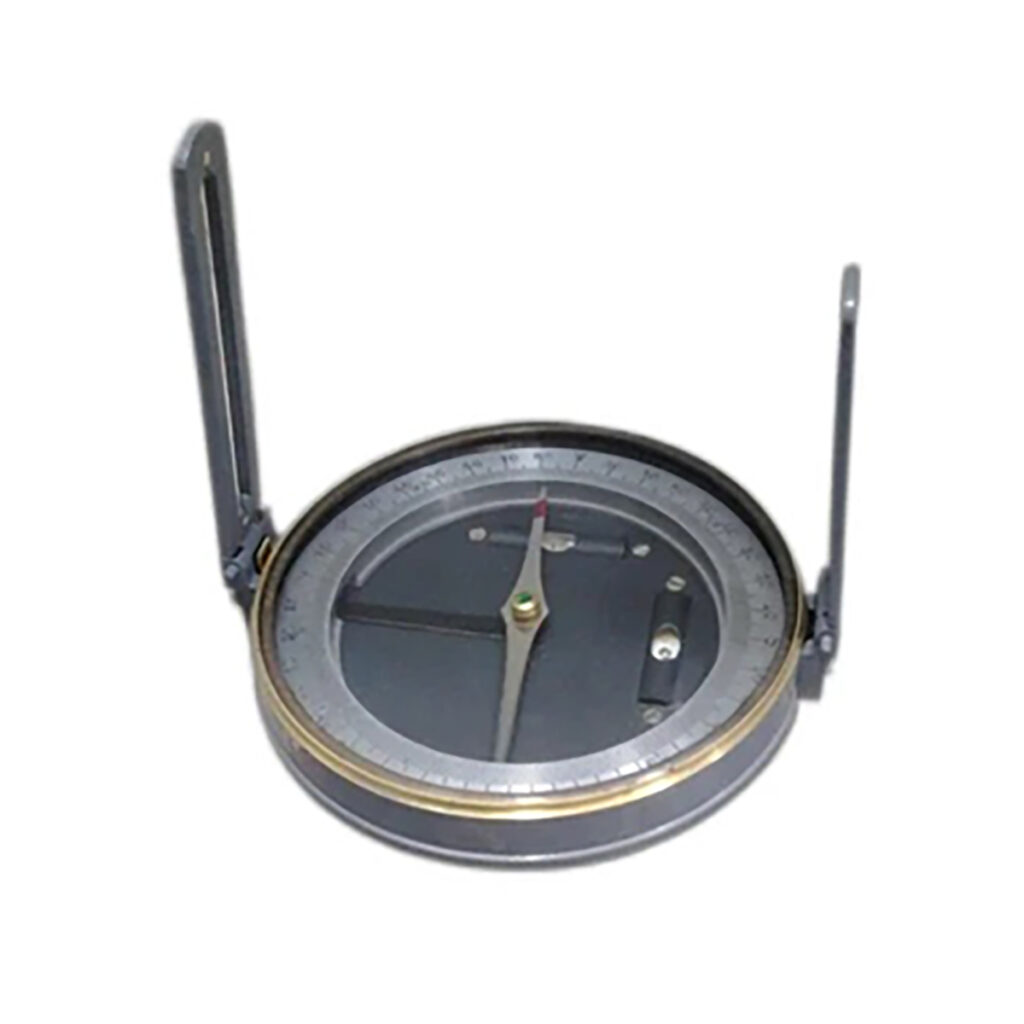Prismatic Compass

A prismatic compass is a surveying tool used to determine the direction and angles between points, as well as waypoints. It’s a portable magnetic compass that can be used as a hand instrument or mounted on a tripod.
Here are some things to know about prismatic compasses:
- How it works: A prismatic compass has a magnetic needle, a graduated circle, and a sighting line. When aligned with a line, the needle points to the magnetic meridian, and the angle between the line and the meridian can be read from the graduated circle.
- Advantages: The main advantage of a prismatic compass is that you can sight and read simultaneously without changing position.
- How to use it: Surveyors use a prismatic compass to take two bearings for each survey line, the fore bearing and the rear bearing. The difference between these two bearings should be 180° if there’s no local attraction.
- Accuracy: A prismatic compass is less precise than other surveying methods and can be affected by errors like magnetic meridian errors, local attraction, and imperfect sighting.
- Parts: A prismatic compass has a sight vane with a horse-hair in the center, a reflecting prism, a mirror, a brake pin, a lifting pin, and a glass cover.
